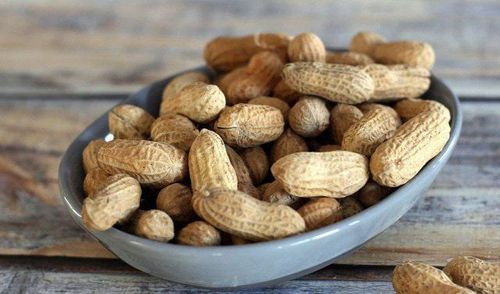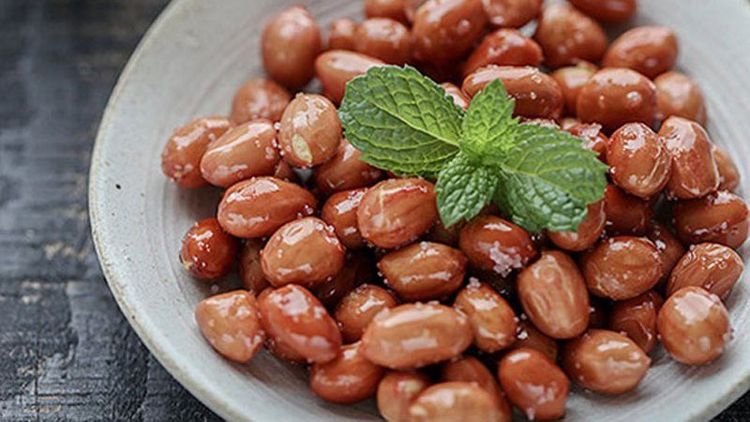The dietary restrictions for individuals with diabetes can be more stringent than usual. Many foods should be avoided or limited in daily meals. This article explores whether diabetics should include peanuts in their diet.
1. Peanuts
Peanuts are recognized for their numerous nutritional benefits, which can be advantageous for those with type 2 diabetes. Eating peanuts and peanut products may provide several benefits, including:
- Promoting weight loss
- Reducing the risk of cardiovascular disease
- Helping control blood sugar levels
- Preventing the onset of diabetes-related symptoms
However, there are some potential risks associated with peanut consumption, especially for individuals with type 2 diabetes.
2. Benefits of Peanuts for People with Type 2 Diabetes
Incorporating peanuts and peanut butter into your diet can offer significant health benefits, particularly for those with type 2 diabetes. Peanuts share many health advantages with other nuts, such as walnuts, almonds, and pecans. Additionally, peanuts are often more affordable than most other nuts, making them a cost-effective source of nutrition.
3. Peanuts Help Control Blood Sugar
Is there a connection between eating peanuts and diabetes management? For individuals with diabetes, it is crucial to consider the glycemic index (GI) of foods. The glycemic index (GI) is calculated on a 100-point scale and measures how quickly carbohydrates in food are converted into glucose or blood sugar. Foods that elevate blood sugar levels quickly have a higher GI value. Water, which is considered to not affect blood sugar levels, has a GI value of 0. Peanuts have a GI value of 13, categorizing them as a low GI food.
So, can individuals with diabetes eat peanuts? Consuming peanuts or peanut butter in the morning can help regulate blood sugar levels throughout the day. Additionally, peanuts can reduce insulin spikes that occur when consuming high-GI foods. They also provide magnesium, supporting blood sugar control. A serving of about 28 peanuts can provide approximately 12% of the recommended daily intake of magnesium.

4. Peanuts may reduce the risk of cardiovascular disease
Eating peanuts might lower your risk of cardiovascular disease, which is a common complication associated with diabetes. Incorporating more nuts into your diet may also help decrease high blood pressure, another frequent issue for those with diabetes.
5. Peanuts May Aid in Weight Control
Peanuts can help you feel fuller, which may lead to eating less overall. This can assist in maintaining a healthy weight and better controlling your blood sugar levels.
6. Peanuts May Lower The Risk of Diabetes
Is it safe to eat peanuts if you have diabetes? According to a study published in the Journal of the American Medical Association, consuming peanuts or peanut butter may actually reduce your likelihood of developing type 2 diabetes. Peanuts are rich in unsaturated fats and other nutrients that help your body regulate insulin.
7. Risks of Peanuts for People with Type 2 Diabetes
Despite the health benefits, there are some risks to consider when consuming peanuts if you have type 2 diabetes:
- Omega-6 Fatty Acids: Peanuts tend to be higher in omega-6 fatty acids than other nuts. An excess of omega-6 can lead to increased inflammation, which may exacerbate diabetes symptoms and elevate the risk of obesity. It's essential to maintain a good balance of omega-3 and omega-6 fats in your diet.
- Salt and Sugar: Many peanut products contain added salt and sugar, which you should limit if you have diabetes. Peanut butter, in particular, often has added fats, oils, and sugars. Opt for a peanut butter that contains few, if any, ingredients besides peanuts for the best benefit.

- Allergies: Peanuts can trigger severe allergic reactions in some people. It's important to recognize the symptoms so you can assist yourself or someone else in an emergency.
- Calories: While peanuts offer several benefits for managing type 2 diabetes, they are also relatively high in calories and should be consumed in moderation. A half-cup of raw peanuts contains over 400 calories according to the USDA Nutrient Database. To lower your calorie intake, consider replacing refined grain products and red or processed meats with peanuts.
How to Incorporate Peanuts into Your Diet: The best way to enjoy peanuts is in their purest form, without added salt or sugar. Eating peanut butter for breakfast can help reduce your appetite and maintain stable blood sugar levels throughout the day.
- Alternatives: If you are allergic to peanuts or simply prefer not to eat them, there are other options that provide similar benefits:
- Other Nuts: Walnuts and almonds have nutritional profiles akin to peanuts and can be beneficial for managing type 2 diabetes.
- Seed Butter: Consider trying sunflower seed butter, which is an excellent protein source and contains twice the magnesium compared to peanut butter.
More than 16 million people in the United States have type 2 diabetes, which can lead to complications such as heart disease, blindness and kidney failure. Diet plays a vital role in preventing and managing the disease.
Including peanuts and peanut products in your diet can offer various health benefits while serving as a more affordable alternative to other nuts. Just remember to consume them in moderation and in their most natural form.
Reference source: healthline.com
To arrange an appointment, please call HOTLINE or make your reservation directly HERE. You may also download the MyVinmec app to schedule appointments faster and manage your reservations more conveniently.








